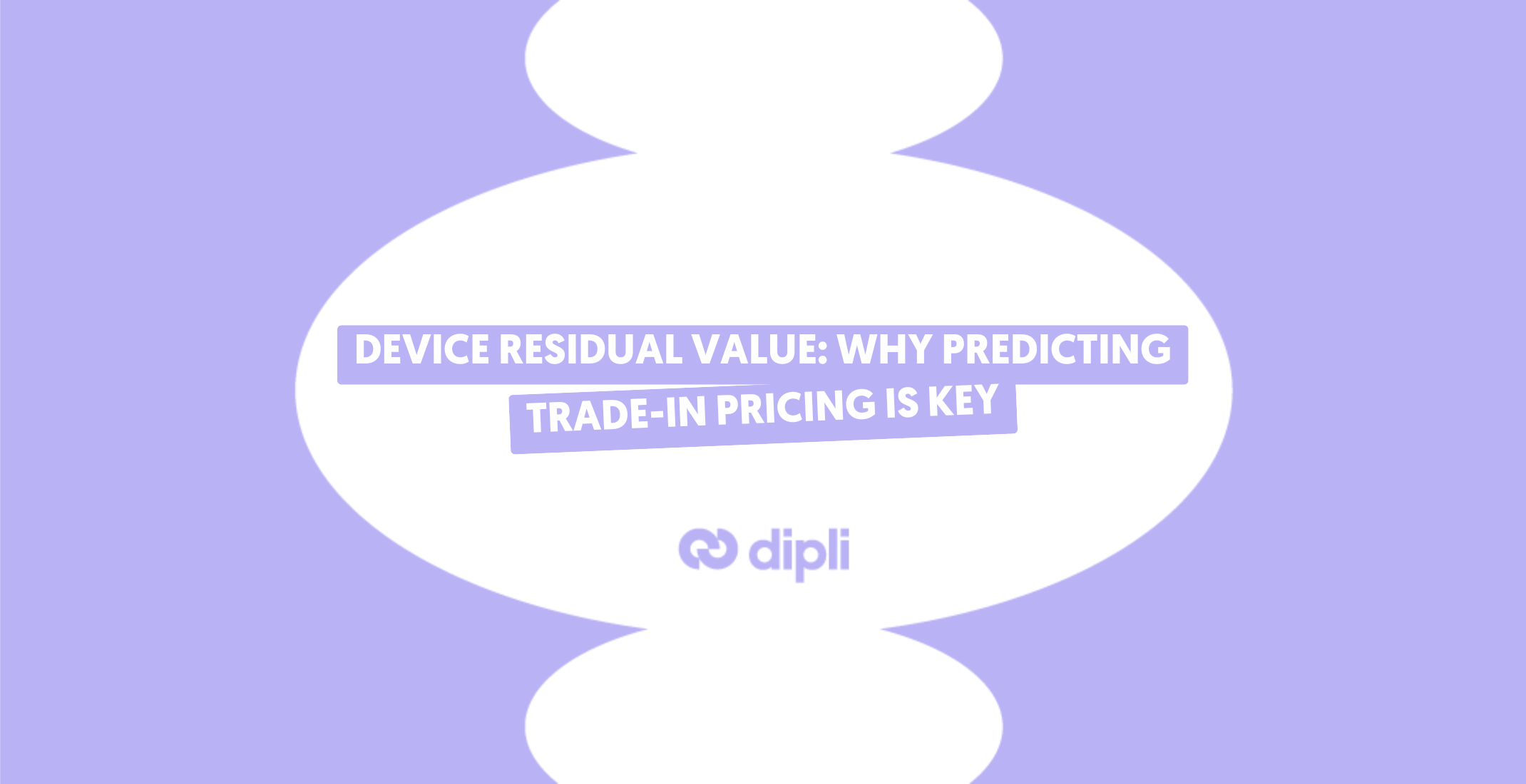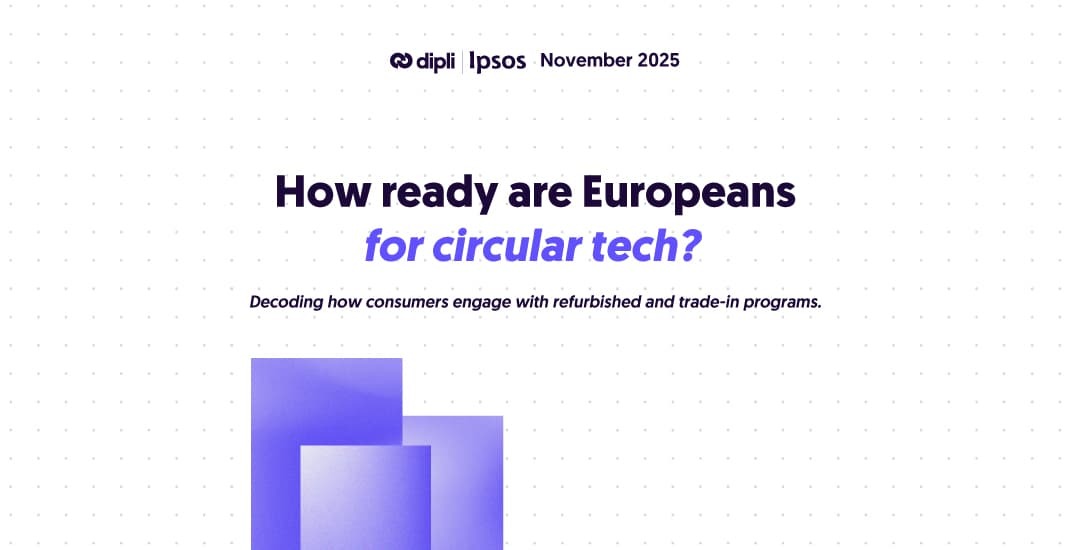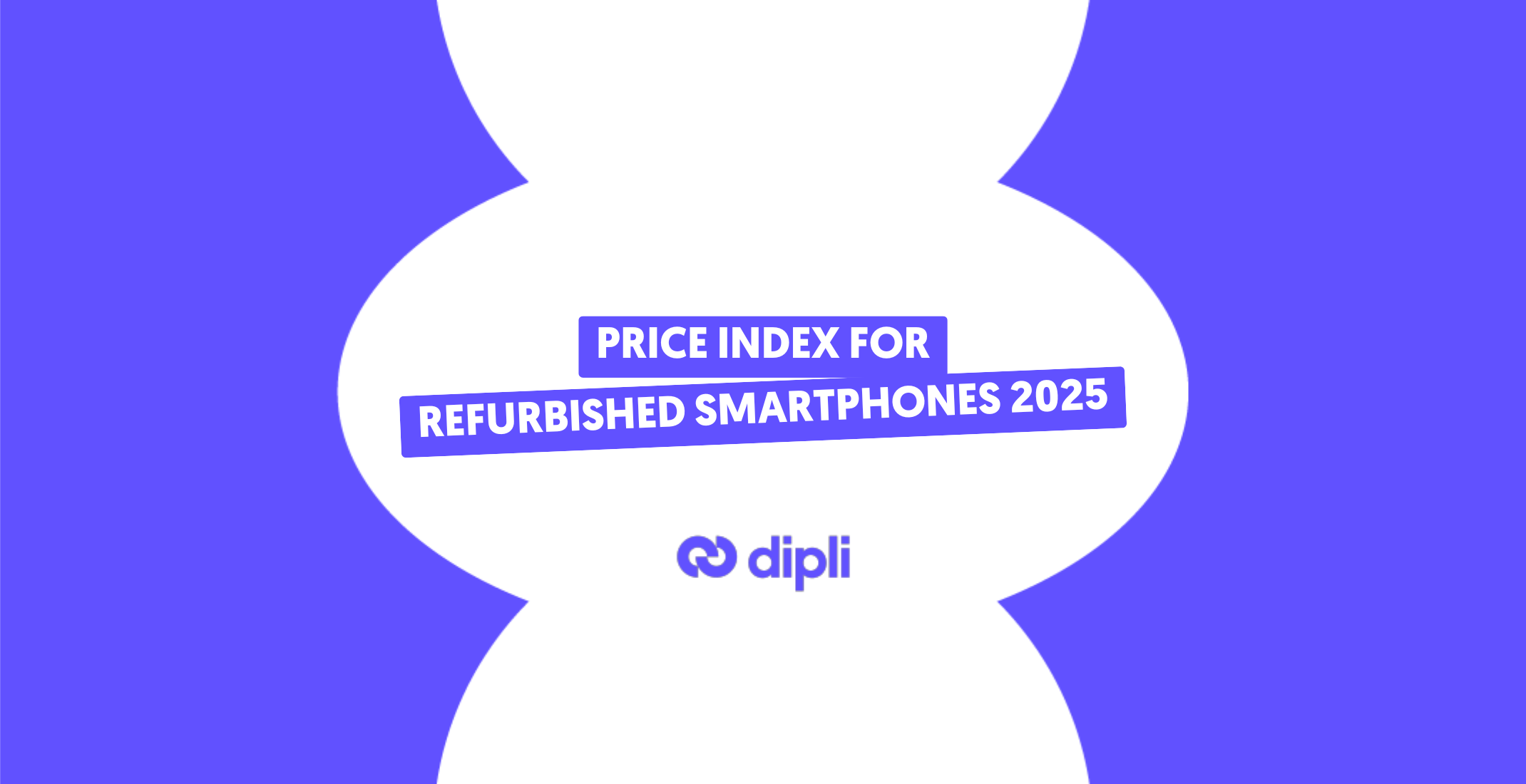Device residual value: the trade-in lever you're underestimating
07/07/2025
0 comments

In 2024, the organized second-hand smartphone market experienced a 6% year-on-year growth, surpassing the primary market's growth rate of just 1%, according to CCS Insight. This trend highlights the increasing significance of residual value as a strategic lever for telcos, OEMs, and distributors since understanding how devices hold their value over time is essential to designing profitable, data-driven trade-in programs.
Depreciation curves are often underestimated, yet they directly impact supply chain margins, customer lifetime value, and the success of buy-back operations. This article breaks down the essentials you need to elevate your current trade-in strategy and turn it into a high-performing, value-generating engine.
Apple, Samsung, Google: value retention after 12, 24, 36 and 48 months
Smartphone value retention isn’t just about technical specs: it’s a clear indicator of brand strength, customer demand, and secondary market performance.
By analyzing average trade-in values for the last four generations across Apple (iPhone 11 to 14), Samsung (Galaxy 10 to 22), and Google (Pixel 4 to 7), based on Dipli's aggregated pricing engine, we uncover striking differences in how each brand holds value over time.

- Residual value after 12 months:
iPhone retain an average of 57.1% of their original price.
In comparison, Samsung devices drop to 39%, and Google to 40.9%.
The gap between Apple and its competitors becomes clear just one year after launch, reaching up to 10 percentage points.
- Residual value after 24 months:
Even after 24 months of use, iPhone retain 45.7% VS 30.1% for Samsung and 28.9% for Google.
The gap continues to widen with time, contradicting the assumption that it would shrink.
Apple maintains a 15-point lead, reinforcing its dominant position.
- Residual value after 36 and 48 months:
After 3 years, iPhone hold at 33.1% and still retain 25.4% after 4 years.
Samsung falls to 18.7% at year three and 14.1% at year four. Google devices retain 19% after 3 years and 12.6% after 4 years.
That’s a value gap of approximately 14 points at 36 months and 11.5 points at 48 months between Apple and the rest.
💡 This consistent performance from Apple creates a value gap that matters, particularly when building predictable, profitable trade-in programs. And the gap keeps widening.
Why residual value should shape your trade-in pricing strategy
For telcos, OEMs and distributors, trade-in pricing isn’t just about device depreciation: it’s a lever to drive sales, manage risk, and boost long-term profitability.
By integrating residual value insights directly into pricing logic, professionals can better anticipate market dynamics and consumer behavior.
Here’s why residual value should be central to your trade-in strategy:
- Predictability enables precision: knowing that an iPhone retains 25.4% of its value after 48 months allows professionals to forecast buy-back costs with greater accuracy and offer competitive pricing at the point of sale.
- Lower inventory risk: devices with high residual value are less likely to create dead stock. When resale liquidity is predictable, pros can scale trade-in programs without overexposing themselves to volatility.
- Stronger marketing offers: high-retention devices allow for compelling upgrade deals, with customers reassured by the guaranteed value of their old smartphone.
- Customer trust and loyalty: transparent, data-backed trade-in prices signal professionalism and fairness, increasing customer satisfaction.
- Data-backed pricing closes the loop: residual value is the output of multiple market forces—demand, brand equity, resale channel efficiency. Understanding it allows professionals to turn trade-in programs from cost centers into competitive assets.
💡 With tools like Dipli’s pricing engine, operators don’t have to guess: they can model, test, and adjust trade-in values across timelines and brands with confidence.
From spot trade-in to predictive pricing: how Dipli helps telcos, OEMs and distributors with DipliForward
Traditional trade-in pricing models often rely on static tables and outdated market estimates. The result? Margin erosion, mismatched offers, and reduced customer confidence.
Dipli solves this with DipliForward, a predictive pricing solution that locks in toorrow's trade-in pricing... today. Tailored for professionals seeking precision and performance, here’s how Dipli shifts the paradigm:
- A predictive engine built on 9 years of market intelligence: with over 520,000 pricing points aggregated daily, Dipli forecasts future residual values with high accuracy.
- Plug-and-play API integration: easily connect to your existing systems (sales, leasing, or financing).
- Full IMEI traceability: every device is tracked through a dedicated dashboard, offering real-time visibility into activations, redemptions, and financial exposure.
- Risk coverage with Aon: the future value of each contract is insurance-backed by Aon, providing financial protection and boosting professional confidence in large-scale trade-in programs.
- And more to discover...

Ready to bring your trade-in program to the next level? Let's elevate it together.
Dipli simplifies the second life of electronic products.
An all-in-one tool for distributors, leasing companies, telecom operators and companies to manage the entire value chain in one place.
The platform connects the electronics industry to secondary markets; simply and securely. Trade-in and return management, refurbishment, omni-channel purchasing and distribution: Dipli covers and simplifies all stages of the circular economy.






Comments (0)